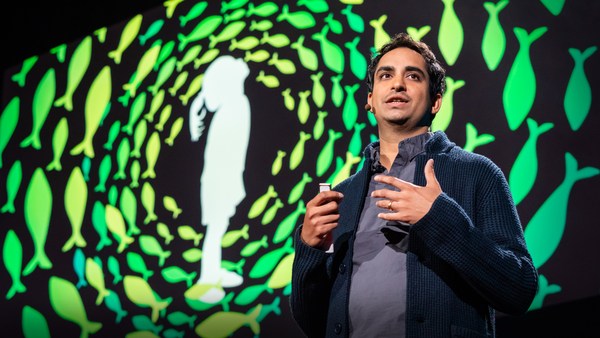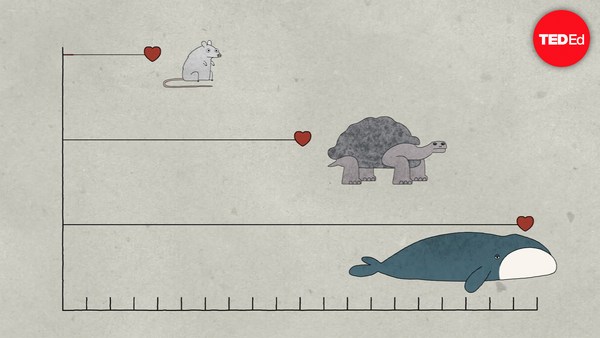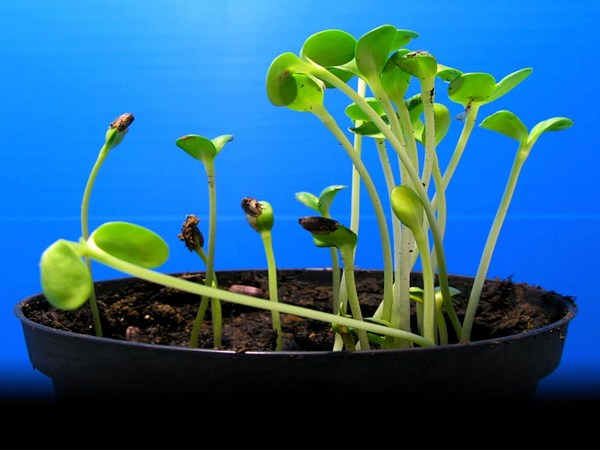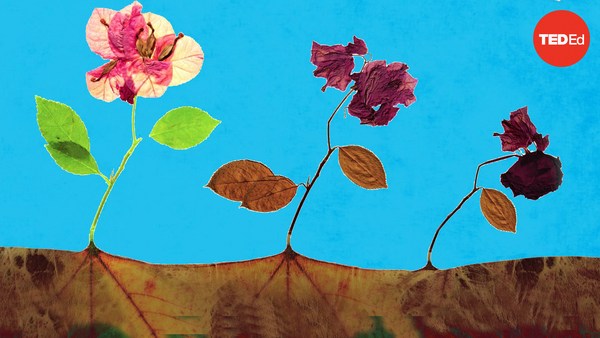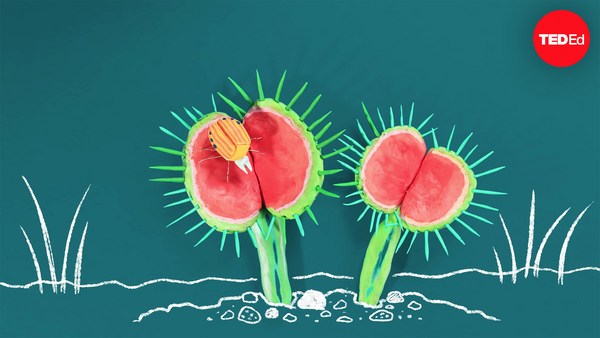This is where I grew up. A small village near the city of Rotterdam in the Netherlands. In the 1970s and 1980s, when I was a teenager, this area was still a quiet place. It was full of farms and fields and swampland, and I spent my free time there, enjoying myself, painting oil paintings like this one, collecting wildflowers, bird-watching and also collecting insects.
And this was one of my prized finds. This is a very special beetle, an amazing beetle called an ant beetle. And this is a kind of beetle that lives its entire life inside an ant's nest. It has evolved to speak ant. It's using the same chemical signals, the same smells as the ants do, for communicating, and right now, this beetle is telling this worker ant, "Hey, I'm also a worker ant, I'm hungry, please feed me." And the ant complies, because the beetle is using the same chemicals. Over these millions of years, this beetle has evolved a way to live inside an ant society.
Over the years, when I was living in that village, I collected 20,000 different beetles, and I built a collection of pinned beetles. And this got me interested, at a very early age, in evolution. How do all those different forms, how does all this diversity come about?
So I became an evolutionary biologist, like Charles Darwin. And like Charles Darwin, I also soon became frustrated by the fact that evolution is something that happened mostly in the past. We study the patterns that we see today, trying to understand the evolution that took place in the past, but we can never actually see it taking place in real time. We cannot observe it. As Darwin himself already said, "We see nothing of these slow changes in progress, until the hand of time has marked the lapse of ages." Or do we?
Over the past few decades, evolutionary biologists have come to realize that sometimes, evolution proceeds much faster and it can actually be observed, especially when the environment changes drastically and the need to adapt is great. And of course, these days, great environmental changes are usually caused by us. We mow, we irrigate, we plow, we build, we pump greenhouse gases into the atmosphere that change the climate. We release exotic plants and animals in places where they didn't live before, and we harvest fish and trees and game for our food and other needs.
And all these environmental changes reach their epicenter in cities. Cities form a completely new habitat that we have created. And we clothe it in brick and concrete and glass and steel, which are impervious surfaces that plants can only root in with the greatest difficulty.
Also in cities, we find the greatest concentrations of chemical pollution, of artificial light and noise. And we find wild mixtures of plants and animals from all over the world that live in the city, because they have escaped from the gardening and aquarium and pet trade.
And what does a species do when it lives in a completely changed environment? Well, many, of course, go, sadly, extinct. But the ones that don't go extinct, they adapt in spectacular ways. Biologists these days are beginning to realize that cities are today's pressure cookers of evolution. These are places where wild animals and plants are evolving under our eyes very rapidly to suit these new, urban conditions. Exactly like the ant beetle did millions of years ago, when it moved inside an ant colony. We now find animals and plants that have moved inside the human colony and are adapting to our cities. And in doing so, we're also beginning to realize that evolution can actually proceed very fast. It does not always take the long lapse of ages; it can happen under our very eyes.
This, for example, is the white-footed mouse. This is a native mammal from the area around New York, and more than 400 years ago, before the city was built, this mouse lived everywhere. But these days, they are stuck in little islands of green, the city's parks, surrounded by a sea of tarmac and traffic. A bit like a modern-day version of Darwin's finches on the Galapagos.
And like Darwin's finches, the mice in each separate park have started evolving, have started to become different from each other. And this is my colleague, Jason Munshi-South, from Fordham University, who is studying this process. He is studying the DNA of the white-footed mice in New York City's parks, and trying to understand how they are beginning to evolve in that archipelago of islands. And he's using a kind of DNA fingerprinting, and he says, "If somebody gives me a mouse, doesn't tell me where it's from, just by looking at its DNA, I can tell exactly from which park it comes." That's how different they have become.
And Jason has also discovered that those changes, these evolutionary changes, are not random, they mean something. For example, in Central Park, we find that the mice have evolved genes that allow them to deal with very fatty food. Human food. Twenty-five million people visit Central Park each year. It's the most heavily visited park in North America. And those people leave behind snack food and peanuts and junk food, and the mice have started feeding on that, and it's a completely different diet than what they're used to, and over the years, they have evolved to suit this very fatty, very human diet.
And this is another city slicker animal. This is the European garden snail. A very common snail, it comes in all kinds of color variations, ranging from pale yellow to dark brown. And those colors are completely determined by the snail's DNA. And those colors also determine the heat management of the snail that lives inside that shell. For example, a snail that sits in the sunlight, in the bright sun, if it has a pale yellow shell, it doesn't heat up as much as a snail that sits inside a dark brown shell. Just like when you're sitting in a white car, you stay cooler than when you're sitting inside a black car.
Now there is a phenomenon called the urban heat islands, which means that in the center of a big city, the temperature can be several degrees higher than outside of the big city. That has to do with the fact that you have these concentrations of millions of people, and all their activities and their machineries, they generate heat. Also, the wind is blocked by the tall buildings, and all the steel and brick and concrete absorb the solar heat and they radiate it out at night. So you get this bubble of hot air in the center of a big city, and my students and I figured that maybe those garden snails, with their variable shells, are adapting to the urban heat islands. Maybe in the center of a city, we find that the shell color is evolving in a direction to reduce overheating of the snails.
And to study this, we started a citizen-science project. We built a free smartphone app, which allowed people all over the Netherlands to take pictures of snails in their garden, in their street, also in the countryside, and upload them to a citizen science web platform. And over a year, we got 10,000 pictures of snails that had been photographed in the Netherlands, and when we started analyzing the results, we found that indeed, our suspicions were confirmed. In the center of the urban heat islands, we find that the snails have evolved more yellow, more lighter-colored shells.
Now the city snail and the Manhattan mouse are just two examples of a growing list of animals and plants that have evolved to suit this new habitat, this city habitat that we have created. And in a book that I've written about this subject, the subject of urban evolution, I give many more examples. For example, weeds that have evolved seeds that are better at germinating on the pavement. Grasshoppers that have evolved a song that has a higher pitch when they live close to noisy traffic. Mosquitoes that have evolved to feed on the blood of human commuters inside metro stations. And even the common city pigeon that has evolved ways to detox themselves from heavy-metal pollution by putting it in their feathers.
Biologists like myself, all over the world, are becoming interested in this fascinating process of urban evolution. We are realizing that we're really at a unique event in the history of life on earth. A completely new ecosystem that is evolving and adapting to a habitat that we have created.
And not just academics -- we're also beginning to enlist the millions of pairs of hands and ears and eyes that are present in the city. Citizen scientists, schoolchildren -- together with them, we are building a global observation network which allows us to watch this process of urban evolution taking place in real time. And at the same time, this also makes it clear to people that evolution is not just some abstract thing that you need to travel to the Galapagos to study, or that you need to be a paleontologist to understand what it is. It's a very ordinary biological process that's taking place all the time, everywhere. In your backyard, in the street where you live, right outside of this theater.
But there is, of course, a flip side to my enthusiasm. When I go back to the village where I grew up, I no longer find those fields and swamps that I knew from my youth. The village has now been absorbed by the growing conglomeration of Rotterdam, and instead, I find shopping malls and I find suburbs and bus lanes. And many of the animals and plants that I was so accustomed to have disappeared, including perhaps that ant beetle.
But I take comfort in the fact that the children growing up in that village today may no longer be experiencing that traditional nature that I grew up with, but they're surrounded by a new type of nature, a new type of ecosystem, that, to them, might be just as exciting as the old type was to me. They are living in a new, modern-day Galapagos. And by teaming up with citizen scientists and with evolutionary biologists like myself, they might become the Darwins of the 21st century, studying urban evolution.
Thank you.
(Applause)
